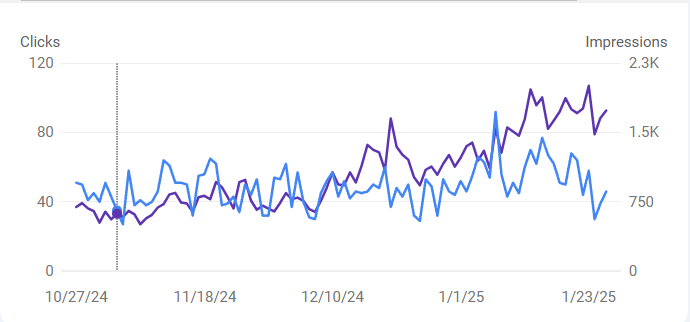In Calgary’s vibrant and competitive business landscape, having a visually appealing website is just the beginning. To truly succeed online, Calgary small business owners and startups need to understand how users interact with their websites and continuously optimize them for better performance. This is where website analytics can become a game-changer.
Website metric analysis helps businesses achieve better user experience and driving conversion rates which enables goal achievement. Our team at AZBrand Marketing and Web Development delivers all-in-one web solutions and design services which help Calgary businesses reach their expressed performance targets. A step-by-step guide will explain how analytics can help your website achieve better performance while dominating in the local market.
Table of Contents

Why Analytics Matter for Calgary Businesses
The entrepreneurial businesses in Calgary experience robust growth through web and physical space market competition. Website analytics provide insights into your audience’s behavior, allowing you to:
- Understand Local Traffic Trends: Learn how Calgary-based customers are finding your site.
- Optimize Marketing Efforts: Focus on what works best for your audience, whether it’s search engines, social media, or paid advertising.
- Boost Conversions: Tailor your website to encourage more users to take action, such as booking services, purchasing products, or signing up for newsletters.
Key Metrics Every Calgary Business Should Track
1. Traffic Sources

Understanding your website visitors’ origin plays an essential role in your business. Users reach your website primarily through search engines and social media platforms and local directories in addition to paid advertising. The traffic sources available to Calgary businesses include Google My Business as well as Yelp and direct word-of-mouth visits.1
- How to Use It: If a significant portion of your traffic comes from local search, ensure your site is optimized for Calgary-based keywords and include your location prominently on your website. For example, use terms like “Calgary landscaping services” or “Calgary coffee shop” to attract local searchers.
2. Bounce Rate

Your website data analytics for bounce rates encapsulates tracking visitors who leave after one unproductive interaction with no further site exploration. Your website displays two potential issues if your bounce rate remains too high: Analytics indicate users abandon websites due to poor content delivery or uninteresting material that fails to support their continued page interaction.2
- How to Use It: Calgary businesses need to ensure their landing pages offer maximum relevance for local customers. Begin each page with clear CTAs particularly designed for mobile and ensure quick loading times. Major customer-facing content must swiftly display menuboards and contact data as well as reservation buttons on the homepage of a restaurant in Calgary.
3. Conversion Rate

A website’s conversion rate shows the number of visitors who accomplish specific goals including form submissions or purchases or newsletter signups. A vital indicator helps to evaluate your website’s operational performance.3
- How to Use It: To increase your conversion rate evaluate both your Call to Action examples and your checkout or sign-up process simplicity. Users who subscribe to their email list at a Calgary yoga studio will receive a free first class without extra cost.
4. Average Session Duration

The length of time that site visitors spend on your pages reveals themselves through this metric. Users spend longer times on your site when they find your content appealing which suggests its value to them.4
- How to Use It: Determine which website pages maintain user engagement. Measure the success of Calgary-based businesses and online stores by examining pages with long visitor stays then replicate effective strategies site-wide.
5. Exit Pages
Exit pages highlight where users leave your site. This insight helps identify potential issues causing visitors to drop off.
- How to Use It: Check vital pages such as pricing or booking sections when user dropout exceeds 20% because these represent critical points in the process. Premium visitors to a Calgary spa abandon their booking webpage because users find the format difficult to understand and the performance slow.
Tips for Making Data-Driven Decisions
Set Clear Goals for Your Website
Define what success looks like for your business. Do you want to:
- Increase online sales?
- Get more phone calls from Calgary customers?
- Build your email subscriber list?
Setting clear goals ensures that you’re tracking the right metrics and optimizing for meaningful outcomes.
Identify Trends and Patterns
Analyze your data regularly to spot trends. For instance, if most of your traffic spikes during Calgary’s lunch hours, you could tailor your content or promotions to align with this behavior.
Test and Optimize
Use A/B testing to experiment with different versions of landing pages, CTAs, or layouts. For example, a Calgary bakery could test whether “Order Now” or “View Menu” drives more clicks on their homepage.
Leverage Heatmaps and User Recordings
Heatmaps show where visitors click or scroll on your site, while user recordings let you observe how they navigate. These tools can reveal areas needing improvement, such as confusing navigation or unclicked CTAs.
How AZBrand Can Help Calgary Businesses Thrive
At AZBrand Marketing and Web Development, we provide tailored solutions for Calgary’s small businesses and startups. Our services include:
- Comprehensive Website Design: Build a website that’s visually appealing, mobile-friendly, and optimized for local search.
- Analytics and Reporting: Track the metrics that matter most to your business.
- Marketing Integration: Combine web design with powerful marketing strategies to maximize your online presence.
Our team will assist in developing data-based website functionality to provide consistently effective results for your local business in Calgary. The first step to start improving website performance and business goal achievement begins now with our team. Contact us today.
Final Thoughts
Analyzing website metrics remains a mandatory skill for all Calgary organizations which aim to succeed in modern digital competition. Website performance improves together with enhanced results through the combination of tracking key metrics and defining specific objectives and evidence-based strategic choices.
Our team at AZBrand Marketing and Web Development stands ready to help Calgary companies throughout their entire journey. Our team is ready to help you maximize your site’s performance while growing your neighborhood footprint.
Citations
- Prasetio A, Sharif OO, Perdana I, Alamanda DT. Analyzing the impact of traffic source on visit duration. ResearchGate. Published online July 1, 2016. https://www.researchgate.net ↩︎
- Mitchell T. Bounce rates in higher ed: The Good, the Bad and the Ugly. Higher Education Marketing. Published September 4, 2023. https://www.higher-education-marketing.com/ ↩︎
- McDowell WC, Wilson RC, Kile CO. An examination of retail website design and conversion rate. Journal of Business Research. 2016;69(11):4837-4842. doi:10.1016/j.jbusres.2016.04.040 ↩︎
- Cetinturk N. Evaluating the digital marketing metrics: the relationship of average session duration to sales performance. ResearchGate. Published online December 12, 2019. https://www.researchgate.net ↩︎









